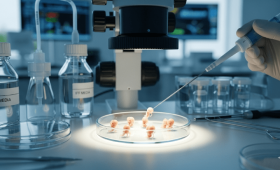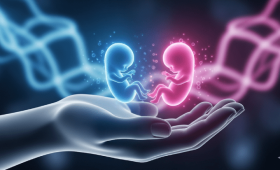This guide answers the 35 most frequently asked questions about all stages of the process, applied techniques, and crucial points for couples embarking on the in vitro fertilization (IVF) journey. To achieve success, don’t forget to leverage the expertise of Cure Holiday to find the most suitable clinic and create a personalized treatment plan.
What Preparations Should Be Made Before Starting IVF Treatment?
The pre-treatment process begins with a detailed medical evaluation and tests. Blood tests are conducted for the woman to measure hormone levels (such as FSH, LH, and AMH) and an ultrasound examination is performed to check the condition of the uterus and ovaries. The male partner is required to provide a detailed sperm analysis to determine sperm quality and count.
Infection screenings and genetic counseling may also be necessary. These preparations are vital for the doctor to create a personalized stimulation protocol and maximize the chances of success. Lifestyle changes, such as quitting smoking and alcohol and adopting a healthy diet, are also recommended at this stage to support the body’s overall readiness for the demanding treatment schedule that lies ahead.
How Long Does The Ovarian Stimulation Phase Take?
The controlled ovarian hyperstimulation (COH) phase begins at the start of the woman’s menstrual cycle and usually lasts between 8 and 14 days. The goal of this process is to develop multiple egg follicles instead of the single egg produced in a natural cycle. The patient uses hormone medications (typically in injection form) to stimulate the ovaries according to a specific schedule.
Doctors at the clinic closely monitor follicle development with frequent ultrasounds and blood tests (estrogen levels) to adjust the dosage. The duration of the process may vary depending on the patient’s age and ovarian response to the medication, making individualized monitoring an absolutely critical component for achieving optimal results and preventing complications.
What Kind Of Side Effects Might Be Seen During Hormone Injections?
Although hormone injections are generally well-tolerated, some women may experience mild side effects. The most common ones include slight pain, bruising, or tenderness at the injection site, bloating, a feeling of fullness in the abdomen, and minor mood swings. A rarer and more serious risk is the development of Ovarian Hyperstimulation Syndrome (OHSS). If OHSS symptoms occur (severe abdominal pain, nausea, rapid weight gain), immediate medical attention is necessary. Close treatment monitoring and early dose adjustments are vital to minimize these risks throughout the course of the stimulation phase. If you have concerns about potential side effects or discomfort, you can consult Cure Holiday for guidance on managing these issues.
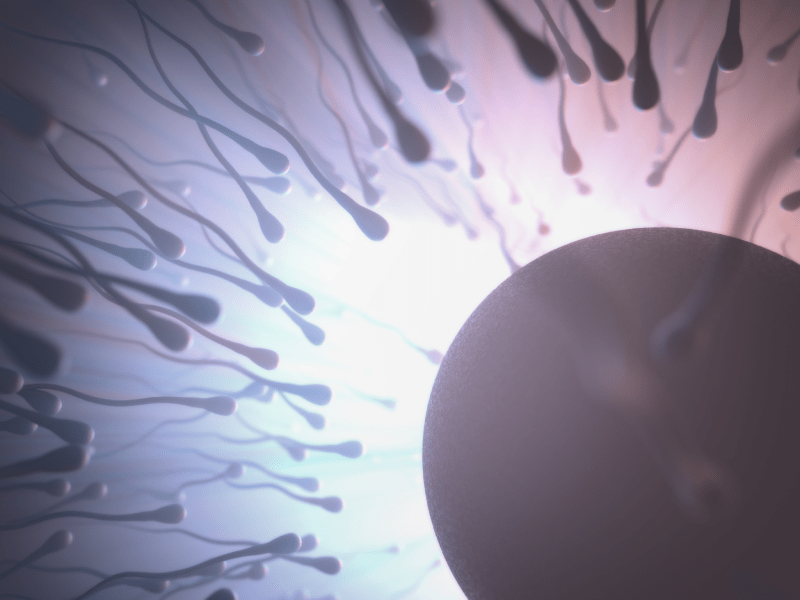
How Is The Egg Retrieval (Oocyte Retrieval) Procedure Performed?
The egg retrieval procedure is a short surgical procedure, lasting approximately 20−30 minutes, performed when the follicles have reached sufficient maturity (usually 34−36 hours after the trigger shot). The procedure is carried out under light sedation or anesthesia, using a fine needle guided by ultrasound, through the vaginal route.
The fluid and eggs in the follicles are gently aspirated with this needle and immediately transferred to the laboratory for evaluation. After the procedure, the patient rests briefly in the recovery area and is usually discharged the same day. This procedure is minimal invasive, designed to be comfortable and completed smoothly in specialized centers.
Is There Pain Or Discomfort After Egg Retrieval?
Since the egg retrieval procedure is performed under light sedation, no pain is typically felt during the operation itself. After the procedure, mild abdominal cramps or a feeling of pressure in the groin area are common, and this discomfort can usually be managed effectively with simple, over-the-counter pain relievers. Some women may also experience slight vaginal bleeding or spotting; this is considered a normal post-procedure occurrence. These discomforts generally resolve on their own within one or two days. Severe pain, high fever, or excessive bleeding are rare but should be reported to the clinic immediately. Always adhere strictly to your clinic’s post-procedural recovery instructions.
How Is The Sperm Sample Prepared And When Is It Collected?
The sperm sample is generally collected on the same day as the egg retrieval procedure via masturbation in a private room at the clinic. To ensure the best quality, the male partner is usually advised to abstain from sexual activity for a period of 2 to 5 days. The collected sample undergoes a special laboratory process called “washing” or preparation. In this process, the most motile and healthiest sperm cells are selected and concentrated, then prepared for use in creating embryos, either through conventional IVF or ICSI. If difficulty is encountered in providing a sample, clinics can offer solutions such as using previously frozen sperm or surgical retrieval (TESE/TESE).
What Is ICSI (Intracytoplasmic Sperm Injection) And When Is It Used?
ICSI is an advanced fertilization technique where a single, carefully selected sperm cell is directly injected into the center of each egg. This method is used instead of the traditional IVF method, where sperm and eggs are combined in a dish. ICSI is primarily utilized in cases of male factor infertility, particularly when there is a low sperm count, poor motility, or abnormal morphology. It may also be preferred if there has been fertilization failure in previous IVF attempts or when using surgically retrieved or frozen sperm. Many high-standard clinics in destinations like Thailand and Cyprus routinely apply ICSI to significantly enhance the chances of successful fertilization.
How Is Embryo Development Monitored After Fertilization?
After successful fertilization, the embryos are closely monitored by embryologists in specialized laboratory incubators under optimal conditions. Embryologists conduct daily evaluations, focusing on the embryos’ division rate, cell count (blastomere), and overall morphological quality. Embryos are typically assessed at the Day 2 (4-cell) or Day 3 (8-cell) stage, and if they show good developmental progress, they are cultured and monitored until Day 5 or Day 6 (the blastocyst stage). Each of these monitoring stages is critical for accurately selecting the healthiest embryo with the highest potential for implantation for the final transfer.
What Does Blastocyst Transfer Mean And Why Is It Preferred?
Blastocyst transfer refers to the transfer of the embryo into the uterus on Day 5 or Day 6 following fertilization. At this stage, the embryo has reached the size and cellular complexity (around 100 cells) that it would naturally achieve when reaching the uterus for implantation.
Embryos that successfully progress to the blastocyst stage are considered to have a higher potential for uterine attachment (implantation), as only the strongest and most genetically competent embryos tend to survive this longer culture period. This advanced technique also helps reduce the risk of multiple pregnancies by often allowing for the transfer of a single, high-quality embryo.
How Is The Embryo Transfer Procedure Performed?
Embryo transfer is the most anticipated and generally painless final stage of the IVF treatment cycle. The procedure is performed with the woman’s bladder full, typically in a gynecological examination position, and is guided by an ultrasound. The high-quality embryo or embryos selected by the embryologist are loaded into a thin, flexible catheter containing a tiny amount of fluid. This catheter is gently passed through the cervix into the uterine cavity, and the embryos are released at a point near the uterine lining. The entire process takes approximately 15−30 minutes and is performed without the need for general anesthesia.
What Should Be Done To Increase The Chances Of Success After Transfer?
To maximize the chances of success after transfer, the most important factor is the uninterrupted and regular use of the progesterone and other hormone supplements prescribed by the doctor. It is advised to avoid strenuous physical activity, heavy lifting, and intense exercise, although gentle daily activities are usually encouraged. Minimizing stress, ensuring sufficient sleep, and maintaining a healthy, balanced diet can also support a receptive uterine environment. Scientific evidence does not support the necessity of strict bed rest during this period; therefore, gradually returning to a normal, relaxed life rhythm and maintaining psychological well-being is highly recommended for the patient.
When Should The Pregnancy Test (Beta HCG) Be Performed?
The pregnancy test, which measures the level of the human chorionic gonadotropin (Beta HCG) hormone in the blood, is typically performed 10 to 14 days after the embryo transfer. This specific waiting period is necessary to allow sufficient time for the embryo to successfully implant in the uterus and for the body to start producing detectable levels of the HCG hormone. A positive result confirms pregnancy, while a negative result indicates treatment failure. During this critical waiting period, maintaining patience, managing anxiety, and strictly adhering to the doctor’s instructions are essential steps to navigate this emotional time.
How Long Should One Wait After An Unsuccessful IVF Attempt?
After an unsuccessful IVF attempt, the timing of the next attempt is important for both physical and psychological recovery for the couple. Doctors commonly recommend waiting between 1 and 3 menstrual cycles to allow the body to fully recover and hormonal balance to return to normal baseline levels. If a frozen embryo transfer (FET) is planned, this waiting period might be shorter since the ovaries will not require stimulation. It is best to dedicate this interim period to rest, emotional recuperation, and meticulous planning of the next treatment protocol in consultation with your medical team.
What Is Done In Case Of Repeated Failure In IVF Treatment?
Recurrent IVF failures necessitate a more in-depth investigation and re-evaluation of all contributing factors. In this situation, doctors typically perform more detailed examinations of embryo quality (possibly with PGT), uterine lining receptivity (using tests like ERA), immune system factors, and clotting disorders. The treatment protocol is personalized, often involving different medication regimens, adding supportive treatments (like immunological therapies), or altering laboratory techniques (such as IMSI or Assisted Hatching). Determining the root cause of the failure is extremely critical for improving the chances of success in any subsequent attempt. Cure Holiday can support you in finding specialized centers experienced in handling these complex and challenging cases.
Which Couples Are Recommended To Undergo PGT (Preimplantation Genetic Diagnosis)?
The PGT (Preimplantation Genetic Diagnosis/Screening) procedure involves examining embryos for chromosomal or single-gene disorders before they are transferred into the uterus. This advanced technique is particularly recommended for couples when the woman is of advanced age, the couple has a history of recurrent pregnancy losses or multiple failed IVF attempts, or if one parent is a known carrier of a genetic disease. PGT significantly increases the likelihood of transferring a healthy embryo, thereby improving overall pregnancy rates and simultaneously reducing the risk of miscarriage or passing on a genetic condition, making it a valuable tool.
Is Sexual Intercourse Allowed During IVF Treatment?
Adherence to the doctor’s instructions regarding whether sexual intercourse is allowed varies across the different stages of the IVF treatment process and is crucial. Generally, during the ovarian stimulation phase, sexual intercourse may be restricted to prevent discomfort due to enlarged ovaries and to mitigate the very slight risk of multiple pregnancies. Immediately before and after the egg retrieval procedure, abstinence is advised to prevent potential infection risks and uterine contractions. Restrictions are often also advised during the two-week waiting period after embryo transfer, although specific policies can differ between clinics.
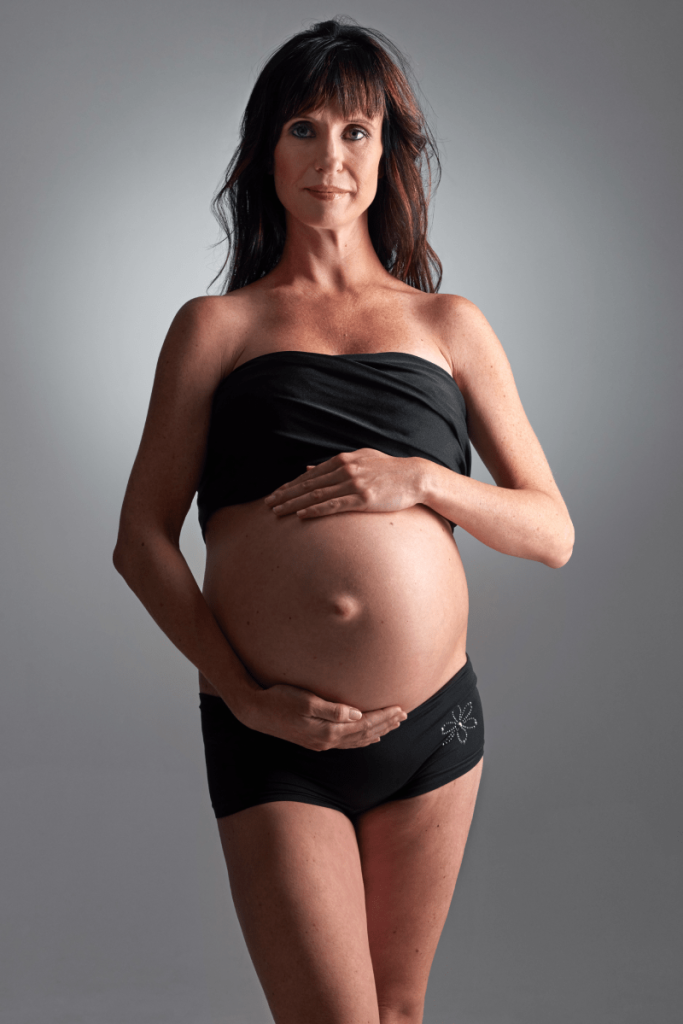
What Are The Biggest Cost Items In IVF Expenses?
The largest components within the total cost of IVF treatment are generally the core treatment package itself (covering egg retrieval, fertilization, culturing, and transfer fees), the cost of the necessary hormone medications used for stimulation, and the fees for advanced laboratory techniques (such as ICSI, PGT, or Time-Lapse imaging), if utilized. Medication costs can fluctuate significantly based on the patient’s specific protocol and required dosages, often representing a substantial portion of the overall budget. Additionally, initial diagnostic tests and associated travel/accommodation expenses, especially for international patients, contribute notably to the total financial outlay. You can seek assistance from Cure Holiday to clarify all detailed cost structures.
How Do IVF Success Rates Change According To Age?
The success rates of IVF treatment are closely correlated, especially with the woman’s age. Success rates peak for women under 35 years old. As age advances, particularly after 40, success rates tend to decline significantly due to a natural reduction in egg quality and an increased risk of chromosomal abnormalities in the eggs. Live birth rates using the woman’s own eggs decrease notably at ages 44 and above. Therefore, considering the age factor and initiating treatment early while tailoring the strategy to the woman’s specific age and ovarian reserve is of vital importance to maximize outcomes.
What Advanced Techniques Are Used In Cases Of Male Infertility?
In cases involving male infertility, various advanced laboratory techniques, in addition to ICSI, may be employed to significantly increase the probability of successful fertilization. These techniques include IMSI (Intra-Cytoplasmic Morphologically Selected Sperm Injection), where sperm is selected by being magnified up to 6000 times based on its morphology, and surgical methods like TESE/TESE, used to retrieve viable, but perhaps immature, sperm cells directly from the testicle or epididymis. These highly specialized techniques ensure the selection of the healthiest sperm, directly impacting embryo quality and enhancing the chances of achieving a successful pregnancy, particularly in severe male factor cases.
How Should Nutrition Be Managed During IVF Treatment?
Managing nutrition during IVF treatment is important for supporting overall health and reproductive function. A Mediterranean-style diet, rich in vegetables, fruits, whole grains, and healthy fats (like olive oil and avocado), is generally recommended. Patients should aim to avoid processed foods, excessive sugar intake, and high amounts of caffeine. The regular intake of folic acid and other vitamins/minerals recommended by the doctor is essential for promoting a healthy environment. Adequate hydration through water consumption is also critical for general body health and ensuring optimal ovarian response to stimulation. A balanced and varied diet, preferably started during the pre-treatment preparation phase, supports the body’s ability to respond well to the treatment.
How Is The Treatment Protocol Applied To Women With A Low Egg Count?
For women with low ovarian reserve or a reduced egg count, the treatment protocol is typically highly personalized, sometimes adopting a more aggressive or, conversely, a milder stimulation approach. Doctors might use higher doses of stimulation drugs or different combinations of medications. Alternatively, milder protocols such as “Mini-IVF” or Natural Cycle IVF may be considered as options. The primary goal is to optimally utilize the existing ovarian potential to collect the highest possible quality eggs. These customized protocols are carefully determined by specialists at the clinic based on the patient’s age, AMH level, and their response to any previous treatment attempts.
How Does The Embryo Freezing Procedure Affect Treatment Success?
The embryo freezing procedure, thanks to the modern vitrification technique, causes almost negligible harm to the embryos and can positively impact treatment success. Transferring all healthy embryos after freezing and thawing them in a subsequent cycle where the uterine lining has been ideally prepared with medication (Frozen Embryo Transfer – FET) can sometimes yield higher pregnancy rates compared to a “fresh” transfer. This improved outcome is often linked to the elimination of potential adverse effects that stimulation drugs might have on uterine receptivity, and it stands as a vital option, especially in situations with a high risk of OHSS.
What Should The Endometrial Lining Thickness Be Before Embryo Transfer?
For a successful embryo transfer, the uterine lining (endometrium) must achieve an optimal thickness and appearance that is crucial for implantation. The ideal thickness is generally recommended to be between 7 mm and 14 mm and should exhibit a trilaminar (three-line) pattern on ultrasound. This specific thickness and appearance indicate that the uterine lining is highly receptive, meaning it is ready to accept the embryo. Doctors use hormonal medications to meticulously create and maintain this ideal state, confirming it through regular ultrasound monitoring. If the uterine lining thickness is insufficient or suboptimal, the embryo transfer procedure may need to be postponed.
Why Is Stress Management So Important During The Treatment Process?
The IVF treatment process, by its nature, can generate high levels of emotional and psychological stress for couples navigating the complexities of infertility. Excessive stress is hypothetically thought to potentially disrupt the body’s delicate hormonal balance and impact blood flow to the uterus, which could theoretically reduce the chance of successful implantation. Therefore, implementing stress management techniques such as meditation, yoga, breathing exercises, or seeking professional psychological counseling is strongly encouraged during the treatment period. Maintaining a positive and relaxed state of mind not only improves overall quality of life but also enhances adherence to the treatment plan. You can explore the counseling services offered by Cure Holiday for tailored support in this area.
How Can The Risk Of Multiple Pregnancy Be Reduced?
IVF treatment naturally carries an increased risk of multiple pregnancies, especially when more than one embryo is transferred. The most effective strategy to mitigate this risk is implementing the Single Embryo Transfer (SET) protocol, particularly when high-quality embryos are available and the woman is younger. With advancements in laboratory techniques (PGT, Time-Lapse), the ability to accurately identify the single healthiest embryo has improved, making it possible to achieve high success rates with a single transfer. Since multiple pregnancies carry inherent health risks for both the mother and the babies, specialists generally advocate for and encourage the practice of single embryo transfer whenever medically appropriate.
Is Gender Selection Legal In Cyprus And How Is It Performed?
In certain regions of Cyprus, gender selection procedures may be legally performed, even outside the strict criteria of medical necessity, subject to local regulatory frameworks. Gender selection is typically achieved using the PGT (Preimplantation Genetic Diagnosis/Screening) test. A biopsy is taken from the embryos on Day 5 or Day 6, and the embryo’s chromosomal composition is analyzed in the genetic laboratory to determine its sex. Healthy embryos of the desired gender are then transferred to the couple. However, this application requires a highly cautious approach due to prevailing ethical and legal limits. You should contact Cure Holiday for up-to-date information regarding the specific legal boundaries and requirements in Cyprus.
What Are The Age Limits For IVF Treatment?
The legal age limits for IVF treatment can vary significantly depending on the country and even the individual clinic’s internal policies. For instance, in Cyprus, treatment may be legally possible for women up to 55 years of age (often requiring special medical and ethical board approvals and typically involving donor eggs). In Thailand, the limit is generally lower, often differing from clinic to clinic around 45 years of age for treatment with a woman’s own eggs. The biological age limit (ovarian reserve) is the primary determinant for treatment using a woman’s own oocytes. You can obtain the most current information about both the legal and medical age limits, along with suitable clinics, by consulting Cure Holiday in detail.
How Should Travel And Accommodation Be Planned During The Treatment Process?
The travel and accommodation plan during the treatment process must be closely aligned with the highly specific treatment schedule. While the ovarian stimulation phase may begin in your home country, you will typically need to stay in Thailand or Cyprus for approximately 10 to 14 days to cover the egg retrieval and embryo transfer procedures.
It is crucial to choose comfortable and stress-free accommodation located very close to the central clinic. Flight planning must be organized so that it does not disrupt the doctor’s post-transfer rest recommendations. It is also wise to maintain a degree of flexibility in your plan, considering that unexpected treatment extensions may occasionally occur. Cure Holiday makes the process easier by planning all your travel and accommodation logistics on your behalf.

What Is The Time-Lapse Incubator System And What Is Its Purpose?
The Time-Lapse Incubator system is a high-technology incubator that is equipped with a special camera system that continuously monitors embryos in the laboratory environment. Unlike the traditional method, this system keeps a continuous video record of every stage of the embryos’ development without needing to remove them from their stable environment. This capability provides embryologists with a wealth of detailed information when evaluating embryos, allowing for the early detection of embryos that have arrested development or exhibit abnormalities. By ensuring embryos grow in a highly stable environment, the system enhances the ability to determine the absolute optimal time for transfer, contributing to higher success rates.
How Do Immunological Factors Affect IVF Failure?
Immunological factors can play a significant role, particularly in cases of recurrent implantation failure and unexplained pregnancy losses. The body’s immune system may, in some instances, mistakenly recognize the embryo as a foreign substance and initiate a rejection response, or create an excessive inflammatory reaction that prevents it from attaching to the uterus.
In such situations, doctors may administer immune system regulating medications (such as intralipids or corticosteroids) or implement additional, specialized treatments. These treatments require a highly personalized and careful approach, initiated only after thorough advanced evaluations, including specific immunological tests. Cure Holiday can help you locate centers specializing in the management of these complex immunological issues.
In Which Cases Should Egg Donation Treatment Be Considered?
Egg donation should be considered as a viable option in scenarios where the woman’s ovarian reserve is depleted (e.g., due to premature menopause), egg quality is critically low due to advanced age, or the woman is a carrier of a genetic disease that she could pass on. This method offers the highest success rates, particularly for women over 45 where the chance of pregnancy with their own eggs is significantly diminished. The legality of this treatment in certain destinations like Cyprus makes it accessible to international patients, and crucial steps like donor selection can be closely coordinated through the support services of Cure Holiday.
Is It Necessary To Take A Break From Work During Treatment?
While completely quitting work is not strictly mandatory during the IVF treatment process, a few days of leave may be necessary during the stimulation phase due to the frequency of appointments and for the egg retrieval procedure. Since egg retrieval is a minor surgical procedure, resting on the day of and the day following the procedure is generally recommended. During the most critical period, after embryo transfer, 1−3 days of rest might be required to lower stress levels and allow the body optimal conditions for implantation. Discussing flexible working hours with your employer can be beneficial, and avoiding physically demanding or exhaustive work is highly advised throughout the entire cycle.
What Is The ER-A (Endometrial Receptivity Array) Test And When Is It Performed?
The ER-A Test (Endometrial Receptivity Array) is a genetic test performed to precisely identify the specific time (“implantation window”) when the uterine lining is most receptive to accepting the embryo. It is particularly recommended for couples who have experienced recurrent implantation failure. The test involves taking a small biopsy from the uterine lining during a cycle that mimics a transfer cycle. The analysis determines the exact hour the uterine lining becomes receptive. This knowledge enables the next transfer to be performed at precisely the correct time, significantly increasing the chance of success and preventing further unsuccessful transfer attempts.
Why Is Extending The Embryo Culture Period Important?
Extending the embryo culture period up to Day 5 or Day 6 allows embryologists to observe the natural selection process of the embryos outside the body. Embryos that fail to reach the blastocyst stage in the laboratory environment usually carry genetic or developmental problems and have a lower chance of attaching within the uterus. This extended culture ensures that only the most viable embryos with the highest implantation potential are selected for transfer. This rigorous screening process is a standard application today because it substantially increases the success rate per transfer, providing embryologists with a more definitive selection capability.
What Follow-Up Process Is Applied After Successful IVF Treatment?
After successful IVF treatment resulting in a positive pregnancy, close medical monitoring and hormonal support typically continue for approximately the first 8−12 weeks. Frequent Beta HCG blood tests and ultrasound examinations are performed to confirm the healthy progression of the early pregnancy. Once the gestational sac and fetal heartbeat are clearly detected via ultrasound, the patient is usually referred back to her regular obstetrician for routine prenatal care. It is crucial to maintain continuous communication with your IVF clinic and the Cure Holiday support services during this initial, critical period to ensure the treatment progresses without complications.
How Should Weight Management Be Handled Before IVF Treatment?
Achieving and maintaining an ideal weight before treatment is vitally important for both increasing the probability of conception and reducing potential risks during the pregnancy itself. Excessive overweight (obesity) or being severely underweight can disrupt hormonal balances, negatively impacting ovarian response to stimulation and the receptivity of the uterine lining. Maintaining a Body Mass Index (BMI) between 19 and 30 is generally recommended for optimal results. Doctors will provide support and guidance to help you reach a healthy weight through a proper nutrition and exercise program before commencing treatment. Weight management is an integral and personalized component of the overall treatment plan.
What Methods Can Be Tried In Case Of Fertilization Failure?
If insufficient embryos are formed, or if fertilization fails, despite combining the egg and sperm (whether by IVF or ICSI), different strategies are implemented for the subsequent attempt. These strategies include trying different stimulation protocols, using antioxidant supplements aimed at enhancing egg and sperm quality, utilizing more advanced sperm selection techniques like IMSI, or applying specialized laboratory techniques to support fertilization, such as calcium ionophore activation. The precise cause of the failure is meticulously analyzed to determine and apply the most appropriate solution for the couple’s unique circumstances.
Is Natural Pregnancy Possible After IVF Treatment?
IVF treatment is employed to resolve a couple’s infertility issues; however, the treatment itself does not completely eliminate the chance of natural conception afterwards. If the underlying cause of infertility is unexplained or has been partially resolved (e.g., following endometriosis surgery), natural pregnancies after IVF are occasionally reported, though they are rare. Conversely, if there are clear physical barriers such as severe male factor infertility or completely blocked fallopian tubes, the likelihood of a natural pregnancy remains very low. Evaluating and monitoring this possibility with your fertility specialist is the most prudent approach.
What Is The Difference Between Fresh Embryo Transfer And Frozen Embryo Transfer?
Fresh embryo transfer is performed in the same cycle immediately following the egg retrieval and fertilization procedure (typically on Day 3 or Day 5); whereas Frozen Embryo Transfer (FET) involves vitrifying the resulting embryos and transferring them in a later cycle, after the uterine lining has been optimally and hormonally prepared.
Today, FET is increasingly showing potential for higher pregnancy rates in some patients compared to fresh transfer, as it removes the potential negative impact of high stimulation hormones on uterine receptivity. Your doctor will carefully determine the most appropriate transfer timing and method based on your individual health profile.
How Many Eggs Should Be Targeted During The Egg Retrieval Procedure?
The ideal number of eggs targeted during the retrieval procedure, while prioritizing quality over quantity, is generally in the range of 10 to 15 eggs. This specific number helps maximize the chance of obtaining a sufficient pool of healthy embryos for both transfer and subsequent freezing after fertilization and embryo culture. Collecting too few eggs (e.g., fewer than 3) significantly diminishes the embryo options, while collecting too many (e.g., more than 20) can increase the serious risk of OHSS. Treatment protocols are delicately calibrated based on the patient’s individual response to ensure this crucial balance is achieved and maintained.
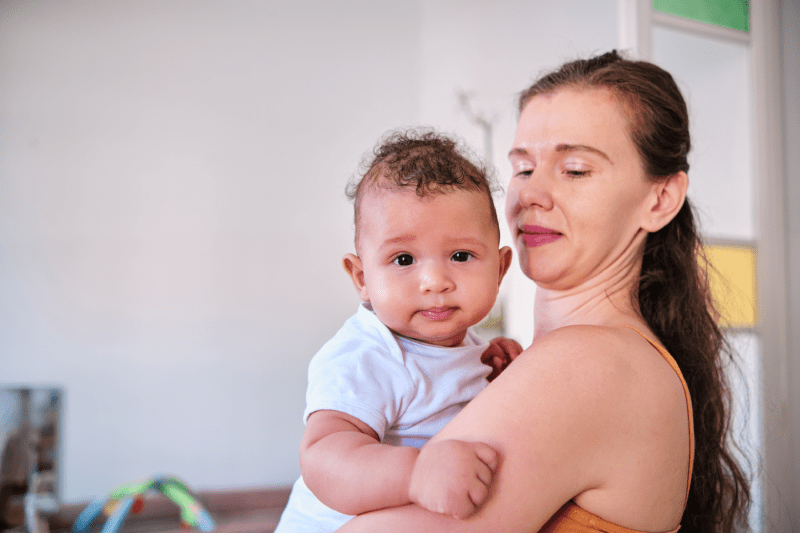
Is There A Thawing Failure After Embryo Freezing?
The risk of thawing failure after embryo freezing is quite low when the modern, rapid freezing technique known as vitrification is used, though it is never zero. Vitrification typically offers post-thaw survival rates exceeding 90%. Failure, though rare, can occur if the embryo’s cells suffer damage during the thawing process or lose their vital functions. This minimal risk is closely linked to the quality of the embryo prior to being frozen. High-quality centers employing experienced embryologists utilize meticulous protocols to minimize this risk as much as possible, ensuring the best chance of survival.
What Are The Three Most Important Factors Affecting The Success Rate In IVF Treatment?
The three most critical factors influencing the success rate in IVF treatment are: Firstly, the woman’s age and the corresponding egg quality (recognized as the most crucial factor); secondly, embryo quality (its genetic integrity and morphological development); and thirdly, the receptivity of the uterine lining (endometrial status). The successful optimization and management of these three factors significantly boosts the chance of pregnancy. The laboratory competence of the fertility clinic and the experience of the doctor are essential prerequisites for managing these factors optimally.
How Frequent Are Doctor Check-Ups And Appointments During Treatment?
Doctor check-ups and appointments are notably frequent during the treatment process, especially throughout the ovarian stimulation phase. Appointments may be needed every few days initially, and then almost every day or every other day for ultrasound and blood test monitoring as the follicles mature. This rigorous monitoring schedule is mandatory for precisely adjusting medication dosages to ensure the eggs are collected at exactly the correct time. For patients undergoing treatment abroad, staying close to the clinic is vital due to the demanding frequency of these essential appointments.
What Additional Tests Can Be Applied During IVF Treatment?
During IVF treatment, several additional tests may be utilized to further enhance the chance of pregnancy or to investigate specific causes of previous failure. These may include PGT (Preimplantation Genetic Screening/Diagnosis), ERA (Endometrial Receptivity Array), IMSI (advanced sperm selection), a hysteroscopy or uterine imaging to check for hydrosalpinx (fluid in the tubes), and comprehensive immunological panels (immune system function tests). Each of these advanced tests is recommended by specialists based on the patient’s unique medical history and specific circumstances, and they will typically be reflected as an added expense to the treatment cost.
How Long Does The IVF Treatment Process Take (Total Duration)?
One complete cycle of IVF treatment, spanning from the initial consultation and evaluation to the final pregnancy test, typically lasts around 4 to 6 weeks from the beginning of the woman’s menstrual cycle. This timeframe includes the initial preparation and testing, the ovarian stimulation phase (10−14 days), egg retrieval, the laboratory process (embryo culture for 3−5 days), and the final 14-day waiting period following the embryo transfer. If the treatment is carried out abroad, additional time for essential travel and accommodation must also be factored into this total duration.
What Is The Embryo Transfer Limit In Cyprus And Thailand?
The number of embryos transferred in IVF clinics in Cyprus and Thailand is governed by the country’s legal regulations, the patient’s age, and the overall embryo quality. Generally, for younger patients under 35 years of age, Single Embryo Transfer (SET) is strongly encouraged to minimize the risks associated with multiple pregnancies. However, legal limits may permit the transfer of up to two embryos, often with the specific decision resting on the clinic’s ethical committee and medical recommendation. You must thoroughly discuss this crucial number with your doctor to balance the multiple pregnancy risk with your desired success rate.
What Is The Trigger Shot Used In IVF Treatment?
The “trigger shot” used in IVF treatment is a critical medication administered in the final stage of ovarian stimulation, approximately 34 to 36 hours before the scheduled egg retrieval procedure. This medication (often containing HCG) acts to trigger the final maturation of the eggs within the follicles, making them ready for collection. The precise timing of this injection is absolutely paramount for the success of the entire treatment cycle, and it must be administered exactly according to the doctor’s instructions, sometimes down to the minute. Incorrect timing can severely compromise the quality and maturity of the collected eggs.
How Are Medical Records And Information Transferred To International Clinics?
Medical records and sensitive information (such as hormone test results, prior ultrasound reports, and summaries of previous treatments) must be transferred securely and promptly to the international clinic. This transfer is generally facilitated via encrypted email, secure online patient portals, or direct fax transmissions. Intermediary agencies like Cure Holiday assist by coordinating medical translators to ensure all your documents are accurately and completely translated into English (or the relevant country’s language), securely delivered to the clinic, and properly reviewed by the doctor. This comprehensive pre-transfer is essential for commencing the treatment with the most accurate protocol.
What Foods Should Be Avoided After Embryo Transfer?
The nutritional focus after embryo transfer should be on supporting a favorable uterine environment and maintaining a comfortable digestive system. High-fiber foods (including fruits, vegetables, and whole grains) are important to help prevent common issues like constipation, while ample water consumption ensures adequate body hydration. It is advised to avoid highly processed foods, raw or undercooked meats/fish (such as sushi), and excessive intake of caffeine. Maintaining a balanced diet rich in protein and folic acid continues to support the necessary biological environment for the healthy implantation of the embryo into the uterine wall.
Does Blocked Fallopian Tubes Cause A Problem In IVF Treatment?
Blocked fallopian tubes are often one of the main reasons IVF treatment is sought, as they prevent the natural union of sperm and egg; however, the physical status of the tubes does not inherently pose a direct problem for the IVF treatment itself. A potential issue arises if the tubes contain hydrosalpinx (fluid accumulation), as this fluid can flow back into the uterus, significantly hindering the embryo’s ability to implant. In such cases, doctors may recommend a pre-transfer surgical procedure to clip or remove the affected tubes. This supplementary surgical intervention can be critical for enhancing the overall chances of successful implantation.
When Can A New Treatment Be Started After An Early Pregnancy Loss?
In the unfortunate event of an early pregnancy loss following IVF, it is crucial to allow couples sufficient time to recover both physically and emotionally before contemplating the next treatment cycle. For physical healing, doctors generally advise waiting between 1 and 3 normal menstrual cycles following the loss. This waiting period is necessary for the uterine lining to completely regenerate and for the body’s hormonal balance to stabilize. It is also often recommended to use this recovery period to conduct additional testing to investigate and potentially identify the causes of the pregnancy loss.
How Is Psychological Support Obtained In Case Of IVF Treatment Failure?
The failure of an IVF treatment cycle can initiate an intense process of grief, disappointment, and emotional distress for couples. Seeking professional psychological support is extremely important for coping with these profound emotional challenges. Fertility clinics often collaborate with psychologists or counselors who specialize in reproductive stress and can provide invaluable assistance during this taxing period. Individual or couples therapy can help alleviate the emotional burden, resolve potential communication difficulties, and prepare the couple psychologically for their next treatment attempt. Cure Holiday can assist you in accessing specialized mental health support services in this highly sensitive area.
How Can Cure Holiday Help And What Services Does It Offer?
Cure Holiday offers comprehensive intermediary and consultation services for couples considering IVF treatment in popular destinations like Thailand and Cyprus. Key services provided include: comparison of reliable, high-standard clinics in both countries, obtaining up-to-date, transparent price quotes, creating customized treatment packages, organizing all travel logistics, including suitable accommodation and flights, and providing dedicated 24/7 local support and professional interpretation services throughout your treatment stay. Cure Holiday’s core mission is to manage all the logistical and bureaucratic burdens, allowing you and your partner to focus completely and solely on the treatment and achieving success. Contact them immediately to ensure you have a trusted expert team supporting you through this critical journey.


